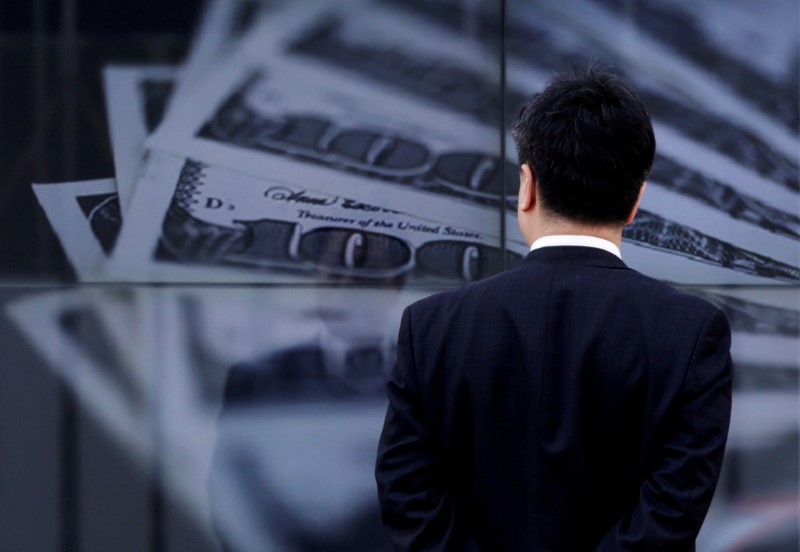By Geoffrey Smith
Investing.com -- The dollar was little changed in early trading in Europe Tuesday but still firmly in an upward trend, supported by rising long-term interest rates and by high demand from commodity buyers.
By 3 AM ET (0700 GMT), the Dollar Index, which measures the greenback against a basket of developed market currencies, was down less than 0.1% at 94.320, having touched a high of 94.442 overnight.
The dollar is being firmly underpinned by the rising trend in U.S. bond yields, as the market positions for a reduction in bond purchases by the Federal Reserve from next month onward. The benchmark 10-year Treasury yield hit a new five-month high of 1.63% during the Asian session after a quiet day when the cash bond market was closed for the Columbus Day holiday.
Demand for Treasuries will be tested later Tuesday at 1 PM ET with a 10-year note auction. Before that, the U.S. will also publish its monthly JOLTS job openings survey. Vacancies have surged in recent months, hitting 10.934 million in August.
Vacancies are also at record levels in the U.K., topping 1 million for the first time in August, according to data released early Tuesday. The Office for National Statistics also recorded a 235,000 rise in employment in the three months through August, meaning that more people are now in work in the U.K. than in February 2020.
All of that was unable to lift sterling much, however, given that the market has already all-but priced in a first interest rate hike by the end of the year. GBP/USD rose less than 0.1% to $1.3607, while EUR/GBP rose by 0.1% 0.8501. The euro also inched higher against the dollar to $1.1567, but analysts see it staying under pressure after the European Central Bank indicated it won’t be hurried into tightening policy. ECB chief economist Philip Lane said on Monday he still believes the bulk of inflation pressure is coming from temporary factors.
“A combination of high energy prices and a rising yield differential will crimp the Euro from here and a fall through 1.1500 signals the next stage of its retreat,” said OANDA analyst Jeffrey Halley in a note to clients.
Widening interest rate differentials are also helping the dollar against the yen. USD/JPY inched down in European trading but had hit a new three-year high of 113.49 overnight.
The other supportive factor for the dollar remains the strength of energy markets. Crude oil prices have stayed firmly above $80 a barrel overnight, having hit seven-year highs on Monday. Base metals and agricultural commodities have also performed strongly over the last month. Given that oil and other commodities are traded overwhelmingly in dollars, that raises the amount of dollars that need to be bought – at least until high prices start to destroy demand.
Elsewhere, the Turkish lira fell below 9 to the dollar for the first time, the market punishing one of the rare banks in emerging markets that refuses to tighten monetary policy. The dollar also rose 0.4% against the Korean won to 1200.38 after the Bank of Korea left its key rate unchanged at 0.7%, having raised it in August.
